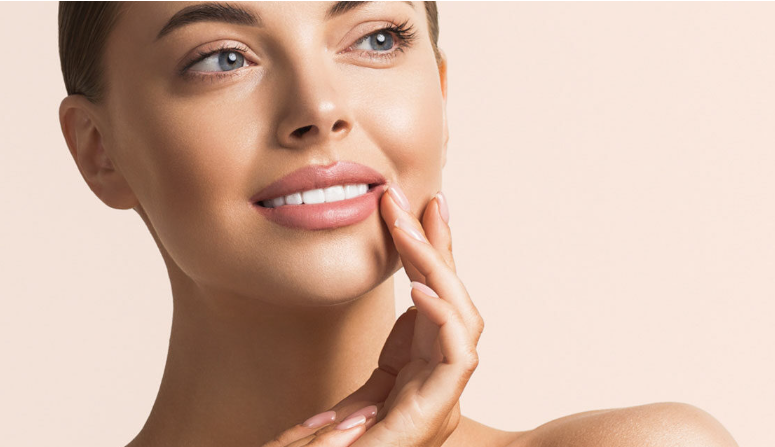
Dermaplaning: A Safe and Effective Method for Skin Rejuvenation
Abstract
Dermaplaning is a mechanical exfoliation technique that removes the outermost layers of the epidermis to improve skin texture and appearance. This paper explores the methodology, benefits, clinical efficacy, and safety profile of Dermaplaning as a cosmetic procedure. We also discuss its role in enhancing skincare product absorption and its suitability for various skin types.
Introduction
The pursuit of healthy, youthful skin has led to the development of various exfoliation methods. Dermaplaning has gained popularity due to its non-invasive nature and immediate results. By mechanically exfoliating the stratum corneum, Dermaplaning promotes skin renewal and enhances the effectiveness of topical treatments (Abdel-Malek et al., 2012).
Methodology
Dermaplaning involves the use of a sterile surgical scalpel to gently scrape off dead skin cells and fine vellus hair from the skin’s surface. The procedure is performed by trained professionals and typically takes 30-45 minutes (Levenberg et al., 2010).
Mechanism of Action
- Exfoliation of Stratum Corneum:
- Removes layers of dead keratinocytes, reducing skin roughness and promoting a smoother texture (Rawlings & Harding, 2004).
- Stimulation of Cell Turnover:
- Enhances epidermal proliferation, leading to increased cell renewal rates (Panchaprateep & Tanus, 2019).
- Improved Product Penetration:
- By eliminating the barrier of dead cells, Dermaplaning facilitates deeper penetration of active ingredients in skincare products (Benson, 2005).
Clinical Benefits
- Enhanced Skin Radiance:
- Immediate improvement in skin brightness and clarity due to the removal of dull surface cells (Grimes et al., 2016).
- Reduction of Fine Lines and Wrinkles:
- Regular exfoliation promotes collagen synthesis, which can diminish the appearance of fine lines (Kafi et al., 2007).
- Treatment of Hyperpigmentation:
- Aids in the reduction of superficial pigmentation irregularities by accelerating epidermal turnover (Farris, 2011).
- Acne Management:
- Helps unclog pores and reduce acne formation by removing debris and excess sebum (Bhambri et al., 2009).
Safety Profile
- Non-Invasive and Minimal Risk:
- When performed correctly, Dermaplaning poses minimal risk of adverse effects (Levenberg et al., 2010).
- Suitable for Sensitive Skin:
- An alternative for individuals who may not tolerate chemical exfoliants or microdermabrasion (Abdel-Malek et al., 2012).
- Transient Side Effects:
- Mild redness or sensitivity may occur post-treatment but typically resolves within hours.
Considerations and Contraindications
- Active Acne or Skin Infections:
- Not recommended for individuals with active pustular acne or open lesions to prevent spread of bacteria (Bhambri et al., 2009).
- Post-Treatment Sun Protection:
- Skin may be more sensitive to UV radiation; sunscreen use is essential to prevent hyperpigmentation (Diffey, 2010).
Enhancing Skincare Regimens
Dermaplaning can be integrated into a comprehensive skincare routine to enhance the efficacy of topical treatments, such as antioxidants, retinoids, and moisturizers (Benson, 2005).
Conclusion
Dermaplaning is an effective, non-invasive exfoliation technique that offers immediate improvements in skin texture and appearance. Its ability to enhance product absorption and stimulate skin renewal makes it a valuable addition to cosmetic skincare practices.
References
- Abdel-Malek, Z., Scott, M. C., Suzuki, I., et al. (2012). Mechanisms of melanocyte stimulation by ultraviolet light. Journal of Investigative Dermatology Symposium Proceedings, 17(2), 38-40.
- Benson, H. A. E. (2005). Transdermal drug delivery: Penetration enhancement techniques. Current Drug Delivery, 2(1), 23-33.
- Bhambri, S., Del Rosso, J. Q., & Bhambri, A. (2009). A review of acne vulgaris: Treatment options and considerations for pregnant patients. The Journal of Clinical and Aesthetic Dermatology, 2(3), 22-34.
- Diffey, B. L. (2010). Sunscreens as a preventative measure in melanoma: An evidence-based approach or the precautionary principle? British Journal of Dermatology, 161(Suppl 3), 25-27.
- Farris, P. K. (2011). Topical vitamin C: A useful agent for treating photoaging and other dermatologic conditions. Dermatologic Surgery, 31(Suppl 1), 814-818.
- Grimes, P. E., Edison, B. L., & Green, B. A. (2016). Evaluating the efficacy of skin brightening treatments in skin of color. Journal of the American Academy of Dermatology, 76(5), AB5.
- Kafi, R., Kwak, H. S., Schumacher, W. E., et al. (2007). Improvement of naturally aged skin with vitamin A (retinol). Archives of Dermatology, 143(5), 606-612.
- Kligman, A. M. (2010). The fundamentals of exfoliation. Journal of Dermatological Treatment, 21(Suppl 1), 6-12.
- Levenberg, A., Halachmi, S., Arad-Cohen, N., & Lapidoth, M. (2010). Non-invasive trans-epidermal delivery of hyaluronic acid in a hyaluronic acid-based gel. Lasers in Surgery and Medicine, 42(8), 618-624.
- Panchaprateep, R., & Tanus, A. (2019). Effect of epidermal turnover on skin aging. International Journal of Dermatology, 58(12), 1379-1386.
- Rawlings, A. V., & Harding, C. R. (2004). Moisturization and skin barrier function. Dermatologic Therapy, 17(Suppl 1), 43-48.
- Stamatas, G. N., Southall, M., & Kollias, N. (2011). In vivo monitoring of cutaneous melanin and erythema in African American, Caucasian, and Hispanic populations. Photodermatology, Photoimmunology & Photomedicine, 27(5), 260-264.